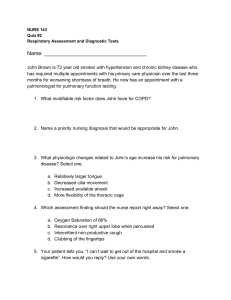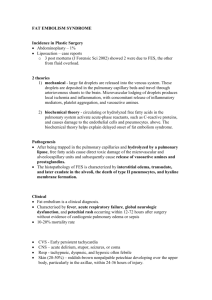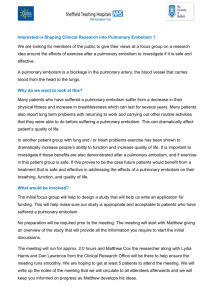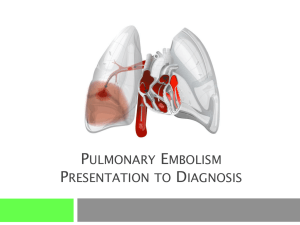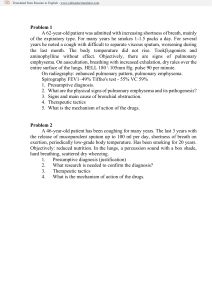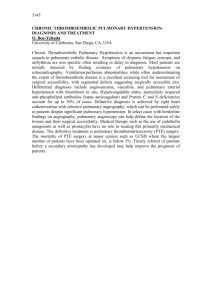echocardiographic findings in pulmonary
advertisement
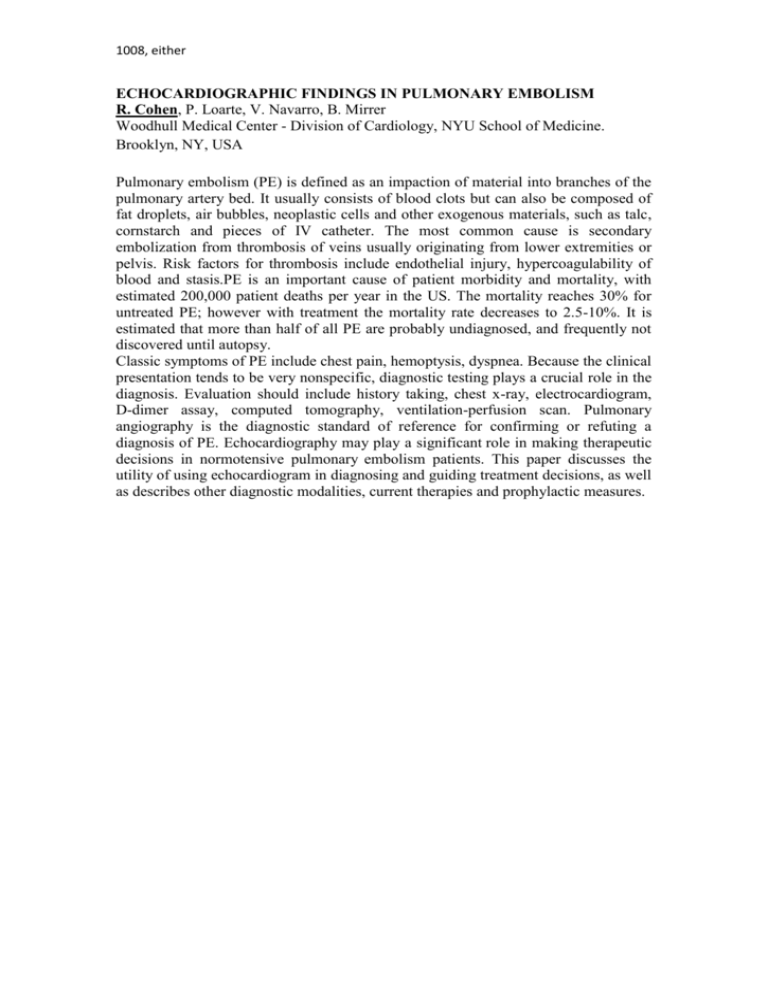
1008, either ECHOCARDIOGRAPHIC FINDINGS IN PULMONARY EMBOLISM R. Cohen, P. Loarte, V. Navarro, B. Mirrer Woodhull Medical Center - Division of Cardiology, NYU School of Medicine. Brooklyn, NY, USA Pulmonary embolism (PE) is defined as an impaction of material into branches of the pulmonary artery bed. It usually consists of blood clots but can also be composed of fat droplets, air bubbles, neoplastic cells and other exogenous materials, such as talc, cornstarch and pieces of IV catheter. The most common cause is secondary embolization from thrombosis of veins usually originating from lower extremities or pelvis. Risk factors for thrombosis include endothelial injury, hypercoagulability of blood and stasis.PE is an important cause of patient morbidity and mortality, with estimated 200,000 patient deaths per year in the US. The mortality reaches 30% for untreated PE; however with treatment the mortality rate decreases to 2.5-10%. It is estimated that more than half of all PE are probably undiagnosed, and frequently not discovered until autopsy. Classic symptoms of PE include chest pain, hemoptysis, dyspnea. Because the clinical presentation tends to be very nonspecific, diagnostic testing plays a crucial role in the diagnosis. Evaluation should include history taking, chest x-ray, electrocardiogram, D-dimer assay, computed tomography, ventilation-perfusion scan. Pulmonary angiography is the diagnostic standard of reference for confirming or refuting a diagnosis of PE. Echocardiography may play a significant role in making therapeutic decisions in normotensive pulmonary embolism patients. This paper discusses the utility of using echocardiogram in diagnosing and guiding treatment decisions, as well as describes other diagnostic modalities, current therapies and prophylactic measures.
